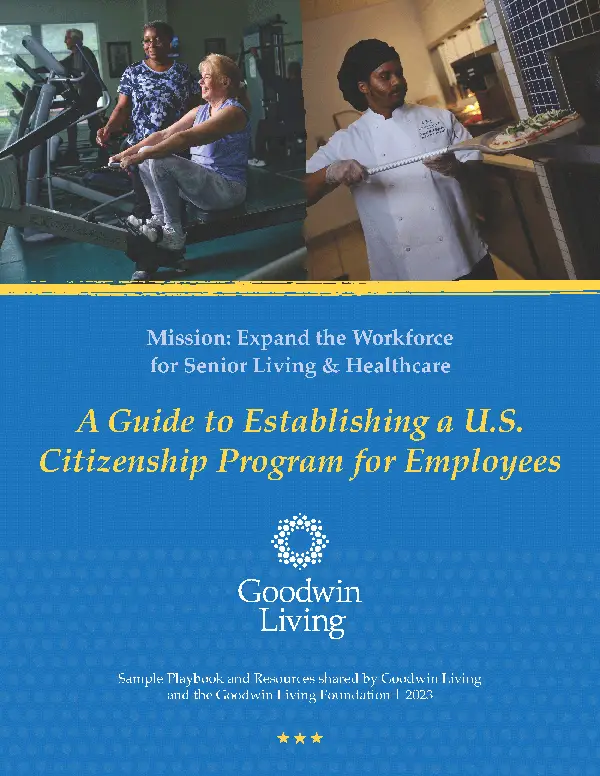
Live with Purpose - November 1, 2020
By Kathie Miller
Every year, organizations around the country take time to recognize hospice throughout the month of November. This highly specialized care is often misunderstood and stigmatized, yet it is care than can make a world of difference during some of the most delicate and intimate moments of our lives.
“Many in our society consider death a taboo subject,” shares Cynthia Carney, executive director of Goodwin Hospice. “As a result, people who are dying feel isolated and alone. The hospice team opens that door to the patient who needs and wants to talk about death. I have seen a great relief and liberation once a patient can speak freely about their death.”
At Goodwin Living, we have been providing hospice care to our residents for more than 20 years, and we have offered it to the greater Northern Virginia community since 2016. As we honor National Hospice Month this year, we want to address some common misconceptions about this specialized care.
When you consider the centuries-long history of medicine, hospice care is relatively new. This very specialized type of care was started in the 1960s, thanks to one woman, Dame Cecily Saunders. As The BMJ (British Medical Journal) shared in its obituary for Dame Saunders, she once wrote the following: "It appears that many patients feel deserted by their doctors at the end. Ideally the doctor should remain the center of a team who work together to relieve where they cannot heal, to keep the patient’s own struggle within his compass and to bring hope and consolation to the end."
This quote remains true for hospice care today, which involves more than just physicians. Dedicated teams of trained professionals—accredited doctors, nurses, social workers, spiritual counselors, aides and volunteers—together ensure that patients, as well as their loved ones, are supported until the end.
Yet many of us under utilize the assurance and care these specially trained, compassionate professionals can offer. Why? Because there is a lack of awareness around hospice and its benefits.
“Seeking hospice help is considered by many to be ‘giving up,’” comments Carney. “The hospice team, on the contrary, believes that you can live life more fully until the day you die if you are provided with physical, emotional and spiritual support.”
To help foster greater understanding of hospice care and what it can do for you and your loved ones, we want to address some of the most common myths or misconceptions.
Hospice care teams meet patients and their loved ones during some of the most sacred and intimate moments in their lives. And they remain there for them, 24/7, seeing them through to the end of life and continuing to support them as they process the loss.
“Hospice team members help to normalize the idea that death is part of our lives, and that we can reach out to others for expert help and compassionate support when making this final journey,” noted Carney.
As we recognize National Hospice Month, we extend our profound gratitude to those who provide this type of care, especially our colleagues with accredited Goodwin Hospice.
As Corporate Director of Marketing & Communications, Kathie Miller provides strategic guidance and tactical support for all areas of Goodwin Living. She writes, edits and manages The Good Life blog and newsletter. Kathie joined GHI in 2014 after nearly 15 years at NPR, where she honed her skills in brand and reputation management, content marketing and internal communications. Originally from Pennsylvania, Kathie has slowly come to realize she’s lived in Arlington for more than half her life and should call herself a Virginian. She enjoys the outdoors and brings her rescue dog, Remi, to work every day.
